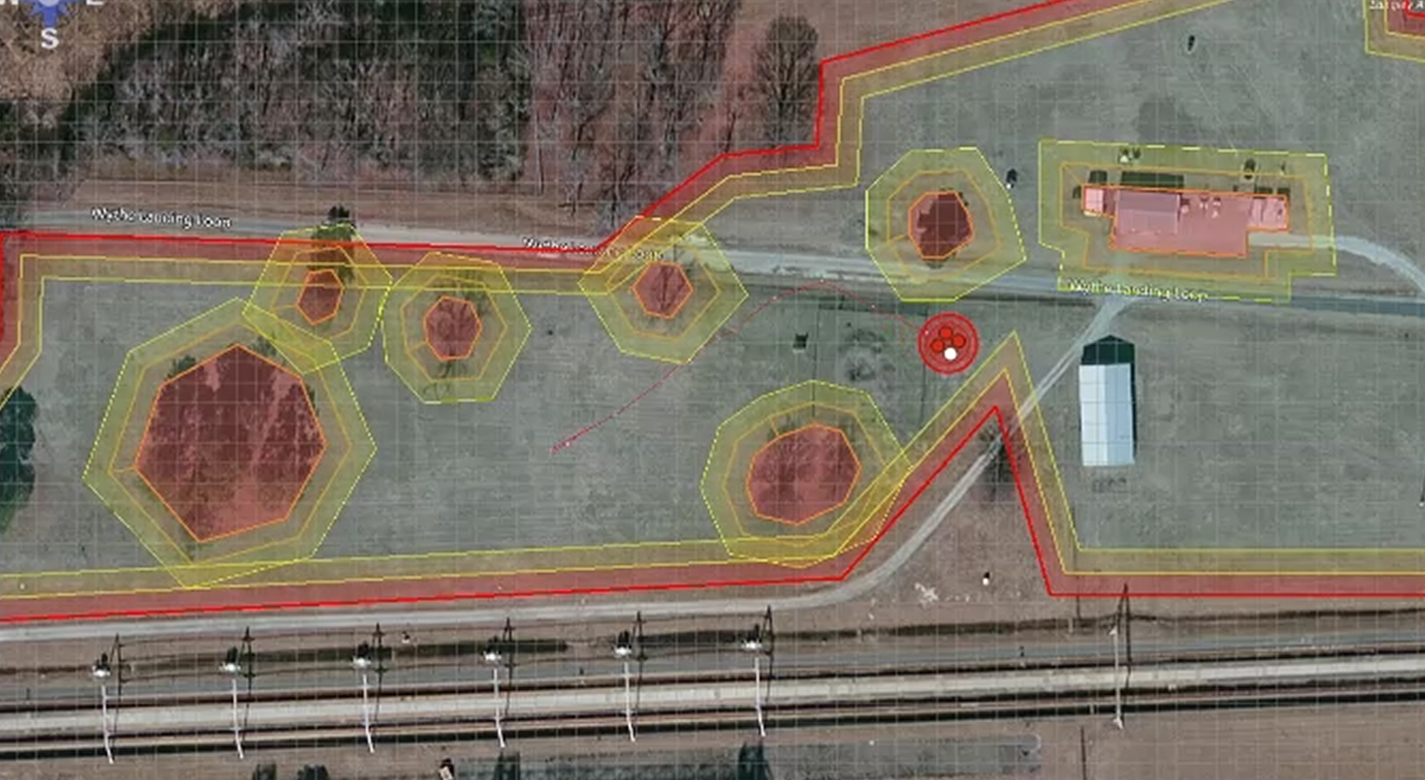NASA’s new technology paralyzes drones that enter restricted areas
NASA recently demonstrated a system called Safeguard, which disables a drone if it fails to respond to a warning and enters a designated no-fly zone. It can also impose altitude limits on drones. Mashable declared, “NASA’s drone killer does not play around,” describing how the system can enforce no-fly zones of any size or shape, forcing drones to drop from the sky if they proceed toward a no-fly zone.
Safeguard uses a small piece of hardware attached to the drone to both monitor the drone’s location and potentially take over the drone’s controls if the drone approaches a restricted area. The system has two zones, or levels of warnings before the drone reaches the restricted space. The first zone is a “containment boundary,” where the drone is sent a signal instructing it to take corrective action. If the drone, or its autopilot, does not correct its course and continues into the second zone, the drone is disabled and forced to land. This is the “terminate” zone. The two zones are shown in the image below, with yellow being the containment zone and red being the terminate zone.
Geofencing
Drones (and drone operators) have made the news for operating in prohibited areas, from dropping phones and drugs to prisoners to interfering with firefighting efforts. US lawmakers recently proposed mandatory geofencing to restrict airspace for drone flight, both hobbyist and commercial.
Commercial drone companies, such as DJI, have added GPS-based geofence systems to their drones. The no-fly zones are programmed into the drones’ geofence system, first warning operators if they approach a geofenced area, then restricting flight if the drone proceeds into a restricted zone. Geofencing helps reduce the threat of accidental, dangerous drone encounters or malicious attacks. However, it is highly reliant on GPS availability and uncertified autopilot technology.
Safeguard system
Safeguard takes geofencing one step further. It can be used on both fixed-wing and multi-rotor drones. Safeguard overcomes three common technical challenges of typical geofencing:
- Strict dependence on GPS
- Reliance on non-secure communication channels
- The use of uncertified autopilot technology
According to NASA, “What makes this technology different from existing geofencing systems is that the safety net is built on rigorous mathematics and works independently from the onboard autopilot.” It also overcomes the reliance on GPS, which is prone to signal loss.
“The algorithms for establishing the validity of a boundary and for detecting proximity to all defined boundaries are based on rigorous mathematical models that have been formally verified,” stated NASA. “To support the creation of highly-assured algorithms, the boundary detection and violation recognition functions embedded within the Safeguard code have been developed and verified using formal methods… In addition, Monte Carlo evaluations were conducted in MATLAB to provide evidence of proper functionality of the boundary detection and violation algorithms.”
Steer clear of no-fly zones.
Safeguard lists cargo delivery, surveillance and monitoring, infrastructure inspection, and agriculture as potential applications, but most drone operators have nothing to worry about. Safeguard is only for designated no-fly zones such as airports, stadiums, military bases, and other secure locations. These areas are typically full of warning signs and no place for drones to be buzzing around in the first place.
Safeguard is small enough to be mounted on any drone. While it’s not required on drones now, it could be required for certain types of drones in the future. For drone operators who are still enraged at the thought of technology disabling their drone mid-flight, this technology is far gentler than the laser technology used to shoot down drones. Boeing’s Compact Laser Weapon System, which debuted in 2015, directs a high-energy beam to the drone, which causes the drone to burst into flames.
 Cleve’s Corner: Cleve Moler on Mathematics and Computing
Cleve’s Corner: Cleve Moler on Mathematics and Computing The MATLAB Blog
The MATLAB Blog Guy on Simulink
Guy on Simulink MATLAB Community
MATLAB Community Artificial Intelligence
Artificial Intelligence Developer Zone
Developer Zone Stuart’s MATLAB Videos
Stuart’s MATLAB Videos Behind the Headlines
Behind the Headlines File Exchange Pick of the Week
File Exchange Pick of the Week Hans on IoT
Hans on IoT Student Lounge
Student Lounge MATLAB ユーザーコミュニティー
MATLAB ユーザーコミュニティー Startups, Accelerators, & Entrepreneurs
Startups, Accelerators, & Entrepreneurs Autonomous Systems
Autonomous Systems Quantitative Finance
Quantitative Finance MATLAB Graphics and App Building
MATLAB Graphics and App Building










Comments
To leave a comment, please click here to sign in to your MathWorks Account or create a new one.